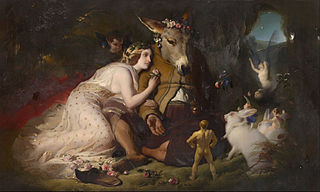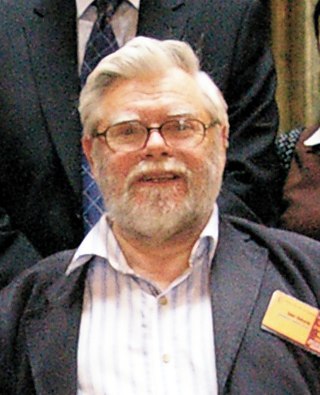Related Research Articles

Creativity is the ability to form novel and valuable ideas or works using the imagination. Products of creativity may be intangible or a physical object. Creativity may also describe the ability to find new solutions to problems, or new methods of performing a task or reaching a goal. Creativity therefore enables people to solve problems in new or innovative ways.
Creative problem-solving (CPS) is the mental process of searching for an original and previously unknown solution to a problem. To qualify, the solution must be novel and reached independently. The creative problem-solving process was originally developed by Alex Osborn and Sid Parnes. Creative problem solving (CPS) is a way of using creativity to develop new ideas and solutions to problems. The process is based on separating divergent and convergent thinking styles, so that one can focus their mind on creating at the first stage, and then evaluating at the second stage.
Creativity techniques are methods that encourage creative actions, whether in the arts or sciences. They focus on a variety of aspects of creativity, including techniques for idea generation and divergent thinking, methods of re-framing problems, changes in the affective environment and so on. They can be used as part of problem solving, artistic expression, or therapy.
Problem finding means problem discovery. It is part of the larger problem process that includes problem shaping and problem solving. Problem finding requires intellectual vision and insight into what is missing. Problem finding plays a major role in application of creativity.

Design management is a field of inquiry that uses design, strategy, project management and supply chain techniques to control a creative process, support a culture of creativity, and build a structure and organization for design. The objective of design management is to develop and maintain an efficient business environment in which an organization can achieve its strategic and mission goals through design. Design management is a comprehensive activity at all levels of business, from the discovery phase to the execution phase. "Simply put, design management is the business side of design. Design management encompasses the ongoing processes, business decisions, and strategies that enable innovation and create effectively-designed products, services, communications, environments, and brands that enhance our quality of life and provide organizational success." The discipline of design management overlaps with marketing management, operations management, and strategic management.
Design thinking refers to the set of cognitive, strategic and practical procedures used by designers in the process of designing, and to the body of knowledge that has been developed about how people reason when engaging with design problems.

The following outline is provided as an overview of and topical guide to thought (thinking):
The leader–member exchange (LMX) theory is a relationship-based approach to leadership that focuses on the two-way (dyadic) relationship between leaders and followers.

Divergent thinking is a thought process used to generate creative ideas by exploring many possible solutions. It typically occurs in a spontaneous, free-flowing, "non-linear" manner, such that many ideas are generated in an emergent cognitive fashion. Many possible solutions are explored in a short amount of time, and unexpected connections are drawn. Following divergent thinking, ideas and information are organized and structured using convergent thinking, which follows a particular set of logical steps to arrive at one solution, which in some cases is a "correct" solution.
The Herrmann Brain Dominance Instrument (HBDI) is a system to measure and describe thinking preferences in people, developed by William "Ned" Herrmann while leading management education at General Electric's Crotonville facility. It is a type of cognitive style measurement and model, and is often compared to psychological pseudoscientific assessments such as the Myers-Briggs Type Indicator, Learning Orientation Questionnaire, DISC assessment, and others.

The majority of studies on sleep creativity have shown that sleep can facilitate insightful behavior and flexible reasoning, and there are several hypotheses about the creative function of dreams. On the other hand, a few recent studies have supported a theory of creative insomnia, in which creativity is significantly correlated with sleep disturbance.

Tudor Rickards is a self-published author of non-fiction and fiction, a business academic, and a scientist. He is Professor Emeritus at University of Manchester and formerly Professor of creativity and Organisational change at Alliance Manchester Business School. His fiction works include The Unnamed Threat: A Wendy Lockinge Mystery (2019), Seconds Out (2018) and Chronicles of Leadership (2016). His non-fiction includes Tennis Matters: A Leaders We Deserve Monograph (2015), Tennis Tensions (2015), The Manchester Method (2015) and The Double Houdini (2016).
Innovation management is a combination of the management of innovation processes, and change management. It refers to product, business process, marketing and organizational innovation. Innovation management is the subject of ISO 56000 series standards being developed by ISO TC 279.
Convergent thinking is a term coined by Joy Paul Guilford as the opposite of divergent thinking. It generally means the ability to give the "correct" answer to questions that do not require novel ideas, for instance on standardized multiple-choice tests for intelligence.
Creative Pedagogy is the science and art of creative teaching. It is a sub-field of Pedagogy, opposed to Critical pedagogy. "In its essence, creative pedagogy teaches learners how to learn creatively and become creators of themselves and creators of their future."
Innovation leadership is a philosophy and technique that combines different leadership styles to influence employees to produce creative ideas, products, and services. The key role in the practice of innovation leadership is the innovation leader. Dr. David Gliddon (2006) developed the competency model of innovation leaders and established the concept of innovation leadership at Penn State University.
The Creative Education Foundation (CEF) is a non-profit U.S. membership organization dedicated to creativity and problem solving, founded in Buffalo, New York, in 1954.
Creative education is when students are able to use imagination and critical thinking to create new and meaningful forms of ideas where they can take risks, be independent and flexible. Instead of being taught to reiterate what was learned, students learn to develop their ability to find various solutions to a problem. Coming up with various out-of-the box solutions is known as divergent thinking and there is no one way of cultivating this skill - largely due to the newness of the concept and the limited scientific information on creativity.
The Divergent Association Task (DAT), published in July 2021, is a psychological test designed to measure a person's creativity. The task involves naming ten nouns that differ as much as possible from each other. Here, the difference between two terms is understood in the semantic sense and is calculated by a special algorithm.
Jin Nam Choi is a Korean organizational psychologist, researcher, author, and academic. He is a professor of Organizational Behavior and Human Resource Management at the Graduate School of Business of Seoul National University.
References
- ↑ Diane Carrington; Helen Whitten (1 October 2005). Future Directions: Practical Ways to Develop Emotional Intelligence and Confidence in Young People. A&C Black. pp. 75–. ISBN 978-1-85539-198-7.
- ↑ Runco, Mark (1 January 1994). Problem Finding, Problem Solving, and Creativity. Greenwood Publishing Group. p. 253. ISBN 978-1-56750-013-4.
- ↑ Craig, Randall. "Min Basadur interviewed by Randall Craig on www.ProfessionallySpeakingTV.com". Interview. Professionally Speaking.
- ↑ "Pelham tries creative problem solving in committee". Pelham News, By Wayne Campbell, November 6, 2012
- ↑ Mitchell, Paul (January 28, 1995). "Seeking the right problem". The Hamilton Spectator.
- ↑ Warren Berger (4 March 2014). A More Beautiful Question: The Power of Inquiry to Spark Breakthrough Ideas . Bloomsbury Publishing. pp. 156–. ISBN 978-1-62040-146-0.
- ↑ "S. Rains Wallace Dissertation Research Award 1980: Past SIOP Award Recipients". Society for Industrial and Organizational Psychology.
- ↑ "Jo Staffelbach Heinz: Becoming Solutions-Driven, Not Crisis-Driven". D Real Estate, by Jo Staffelbach Heinz . Jul 28, 2011
- ↑ Nigel King; Neil Anderson (2002). Managing Innovation and Change: A Critical Guide for Organizations. Cengage Learning EMEA. pp. 37–. ISBN 1-86152-783-7.
- ↑ Paul Patterson; Susan Biagi (2003). The Loom of Change: Weaving a New Economy on Cape Breton. Cape Breton University Press. pp. 111–. ISBN 978-0-920336-85-4.
- ↑ Larisa V. Shavinina (2003). The International Handbook on Innovation. Elsevier. pp. 372–. ISBN 978-0-08-044198-6.